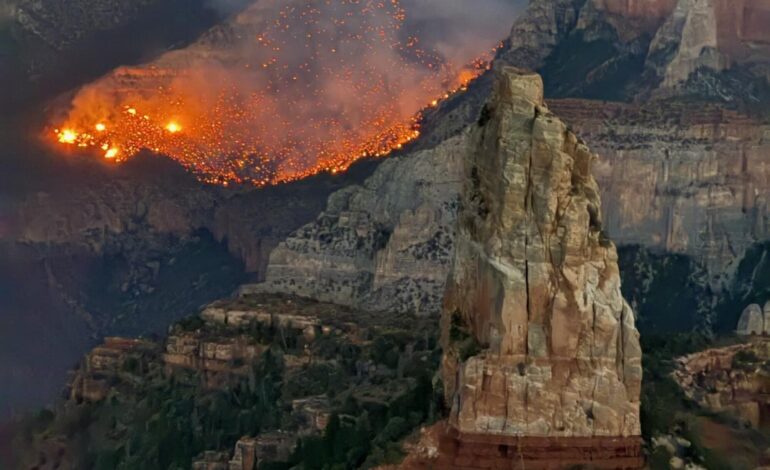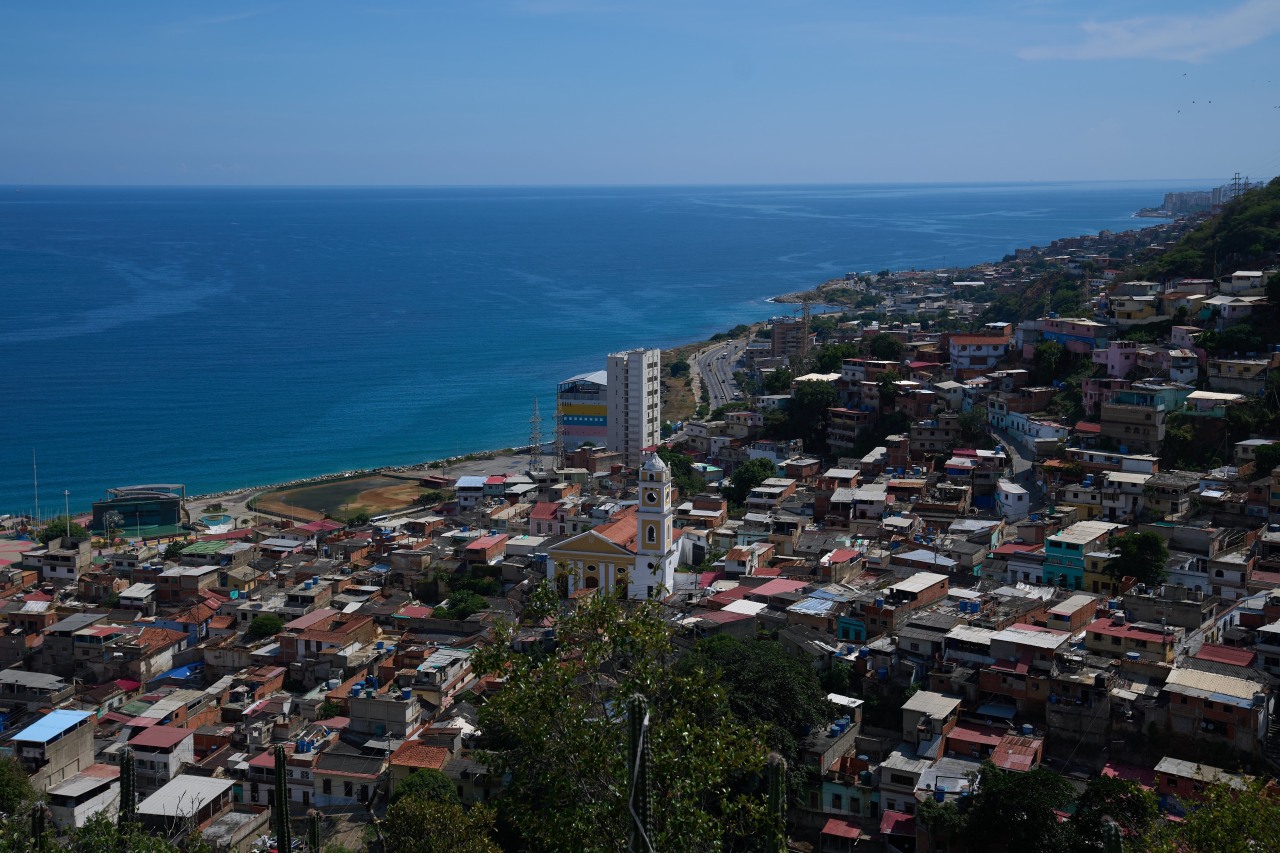Grand Canyon Blaze Escalates from Controlled Burn to Mega Fire

A small fire ignited by lightning on the North Rim of the Grand Canyon escalated dramatically, evolving into the largest wildfire in the United States this year. Initially perceived as beneficial, the Dragon Bravo fire began as a controlled burn, aimed at fostering ecological health. However, within a week, shifting winds transformed it into a catastrophic blaze that has consumed over 145,000 acres and is 63% contained as of July 15, 2023.
Starting in early July, park officials implemented a strategy aligned with modern fire management principles, allowing the fire to burn naturally. This approach is based on the understanding that fire plays a crucial role in maintaining the health of ecosystems in the American West. The park service confidently announced that the fire posed “no threat to public safety or the developed area” of the North Rim. Unfortunately, that assessment proved alarmingly inaccurate as conditions changed rapidly.
On July 11, a park employee recounted the moment the fire escaped containment, stating, “By 3 in the afternoon, crews were struggling to hold it.” The fire rapidly intensified, leading to widespread destruction. Within 48 hours, approximately 70 buildings, including the historic Grand Canyon Lodge, were reduced to ash. This lodge, originally designed by architect Gilbert Stanley Underwood, had stood since 1928, offering one of the most picturesque views in the park.
The aftermath of the fire has ignited intense scrutiny from Arizona officials. Both of the state’s Democratic senators called for investigations into the incident, while Governor Katie Hobbs demanded “intense oversight and scrutiny” of the federal government’s decision to manage the fire as a controlled burn during the peak of Arizona’s dry season. Governor Hobbs emphasized that the people of Arizona “deserve answers for how this fire was allowed to decimate the Grand Canyon National Park.”
Investigations into the fire’s rapid spread will seek to determine whether a significant error in judgment occurred, or if it was a case of unfortunate timing. Len Nielson, the staff chief responsible for prescribed burns in California, expressed a desire for investigators to pinpoint specific failures while cautioning against overreacting to the incident. He stated, “Let’s not throw the baby out with the bathwater,” advocating for the continued use of controlled burns.
Historically, fire has been a natural part of the landscape in the American West, essential for maintaining ecological balance. Prior to widespread suppression efforts, fires were a regular occurrence, ignited either by natural forces or through Indigenous practices that utilized fire as a management tool. The controlled use of fire helps regulate fuel loads, reducing the intensity of inevitable wildfires.
Despite the rationale behind controlled burns, gaining public support remains challenging. Local residents often express concerns about smoke and air quality, complicating efforts to implement prescribed burns. Nielson highlighted the lengthy approval process for a modest burn earlier this year, indicating the resistance faced by fire management advocates.
The recent fire’s intensity can be attributed to several factors, including prolonged drought conditions in Arizona. Data from the Arizona Department of Water Resources indicates that the period from July 2020 to June 2025 is projected to be among the warmest and driest on record. The dry conditions have left both vegetation and soil highly susceptible to ignition.
As authorities analyze the circumstances surrounding the Dragon Bravo fire, former fire chief Riva Duncan noted the potential impact of federal budget cuts on fire management resources. Earlier cuts in meteorological support personnel may have hampered the ability to predict fire behavior accurately. This issue underscores the growing challenges faced by firefighting agencies amid staffing shortages and resource constraints.
The recent extraordinary behavior of the fire, which created its own weather patterns, has alarmed fire management professionals. Timothy Ingalsbee, executive director of Firefighters United for Safety, Ethics, and Ecology, pointed out that the fire’s rapid growth showcases the unpredictable nature of wildfire behavior, particularly in light of climate change and increasing drought conditions.
As investigations unfold, the incident serves as a stark reminder of the complexities involved in fire management. Experts like Stephen Pyne stress the importance of evaluating whether the decision to allow the fire to burn was within acceptable risk parameters. He noted that larger fires often correlate with the dry period preceding the late summer monsoons, raising questions about the timing of the Dragon Bravo fire’s management strategy.
The outcome of this incident will likely shape the future of fire management policies in national parks. As officials and experts navigate the balance between ecological benefits and public safety, the lessons learned from the Dragon Bravo fire will resonate well beyond the borders of the Grand Canyon.






